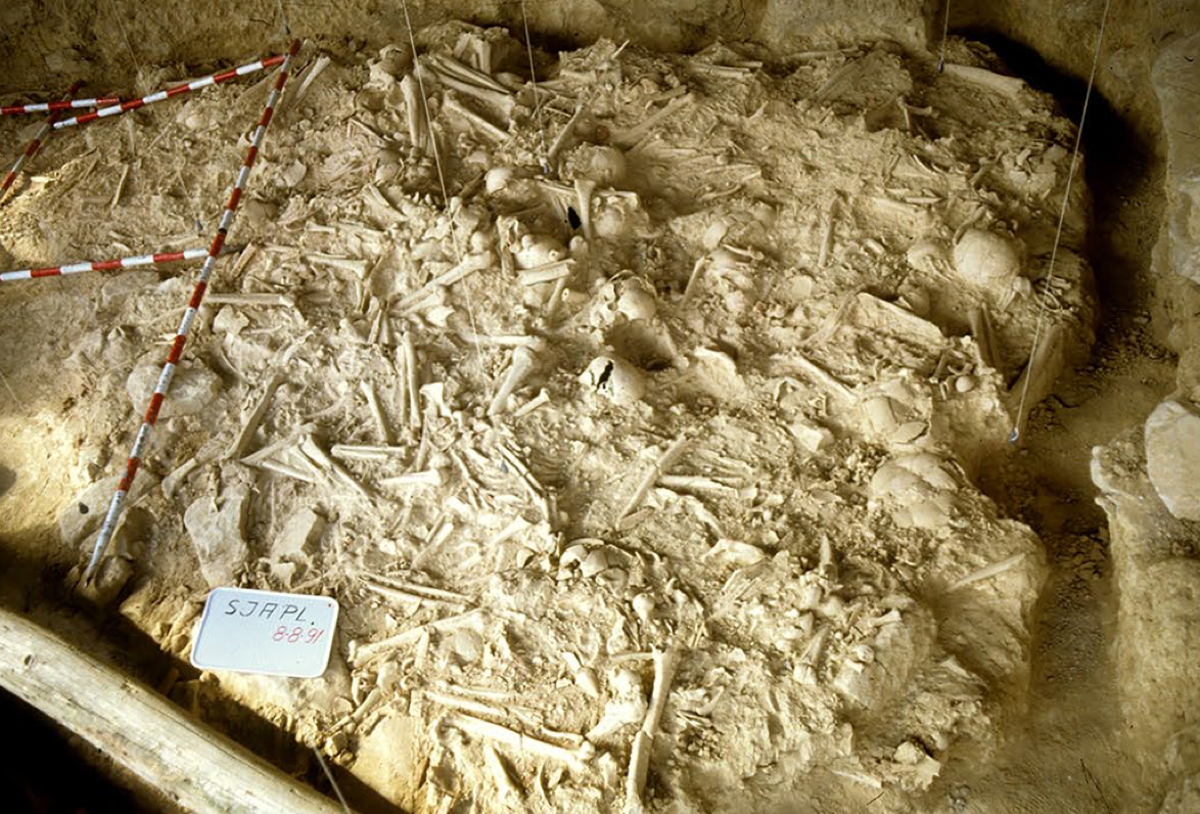
Europe’s first large-scale war likely began about 5,000 years ago in neolithic period – a thousand years earlier than previously thought, a new re-analysis of an archaeological dig suggests.
The latest analysis of over 300 sets of skeletal remains excavated at a site in Spain suggests many of the individuals were casualties of the earliest period of warfare in Europe.
Conflict in Europe around 9,000 to 4,000 years ago remains poorly understood. The earliest such conflict previously known in Europe was believed to have been fought during the Bronze Age about 4,000 to 2,800 years ago.
The findings, published in the journal Scientific Reports, point to a very high number of injured individuals and a “disproportionately high percentage of males” among the remains unearthed at this mass burial site in a shallow cave in the Rioja Alavesa region of northern Spain.
These results hint that the injuries may have been from a long period of conflict potentially lasting months, said scientists, including those from the University of Oxford.
Until now, research has suggested conflicts in the continent in this New Stone Age period consisted of short raids lasting no more than a few days and involving small groups of up to 20–30 individuals.
Researchers thus assumed that early societies lacked the logistical capabilities to support longer, larger-scale conflicts.
In the latest study, scientists re-examined the skeletal remains of 338 individuals for evidence of healed and unhealed injuries.
They also assessed about 52 flint arrowheads discovered at the same site, with previous research finding that 36 of these had minor damage associated with hitting a target.
Based on the analysis, scientists said about 23 per cent of the individuals had skeletal injuries, with 10 per cent having unhealed wounds.
This is substantially higher than the estimated injury rates for the time, which were likely around 7–17 per cent, and 2–5 per cent respectively.
About 74 per cent of the unhealed injuries and 70 per cent of the healed wounds were found to occur in adolescent or adult males – a difference not seen in other European Neolithic mass-fatality sites.
The findings suggested many individuals at the burial site were exposed to violence and may have been casualties of conflict.
Such a high rate of healed injuries also suggested the conflict likely continued for several months.
While the reasons for this likely long-term warfare are unclear, researchers speculate on several possible causes, including tension between different cultural groups in the region during the Late Neolithic.







